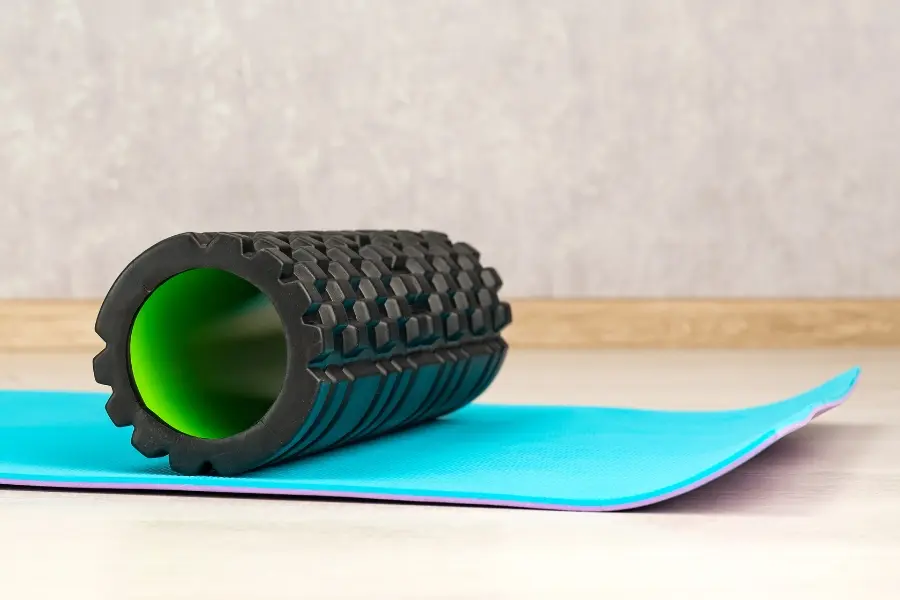To Roll or Knot to Roll? Everything You Knead to Know About Foam Rollers.
If you’ve been training for any length of time, then there is a good chance you will have seen one of these before:

This is a foam roller.
What is Foam Rolling?
Foam rolling is a type of self-massage that purports to decrease muscle stiffness, increase joint range of motion and alleviate pain. A foam roller(er) would typically place the roller on a firm surface, before applying the sore or tight area of muscle to the roller and moving slowly along the roller, stopping and holding in areas that need more focus. This is usually done for 20-30s per muscle area. Foam rolling is very versatile, requiring only a couple of minutes, a single (cost effective) roller and a little free floor/wall space.
How Do Foam Rollers Work?
In short, we don’t know. And by ‘we’, I don’t just mean the fine minds of the Oriam Fitness Suite. You see, while foam rolling is a very commonly practiced intervention, being used all over the world by professional athletes and novice gym goers alike, there is surprisingly little research into the actual biomechanical mechanisms of foam rolling itself. Some believe that foam rolling elongates muscle fascia which leads to greater range of motion across joints. But, to quote author and movement therapist Todd Hargrove:
‘If fascia started to break down, or elongate, every time it felt a little sustained pressure, we would be pretty fragile creatures. Every time we sat on a rock our posterior chain would lengthen.’
One theory that is gaining traction is that foam rolling works by altering the way your brain interprets pain signals (essentially turning down the ‘hurt’ volume from the part of the body being foam rolled) leading to greater mobility around that area and less associated pain. Some even propose that the effects are entirely placebic (i.e. we imagine that foam rolling must be having a positive effect, so it does).
Does Foam Rolling Actually Work?
Well the good news is that yes, it does. At least, sort of. Research HAS shown foam rolling can reduce pain and increase ROM albeit temporarily (1,2). The effects of foam rolling generally subside within a couple of hours, and are not progressive. And while research has not shown any detrimental effect of foam rolling, the effects can generally be replicated with other methods such as stretching or manual therapy.
Key Takeaways
So what exactly can we take from this?
In short, foam rolling can be a useful tool to gain temporary improvements in pain and range of motion, without any obvious detriments. This in turn may allow for improvements in performance during an exercise session. As such, it generally makes sense to foam roll before an exercise session as part of a warm up. If new to foam rolling a smooth roller would be advisable. These are generally less expensive than a textured foam roller and aren’t as intense for those new to the activity. Furthermore Spending much more than 5-10 minutes foam rolling may be overkill!
Like many things fitness, the answer to ‘should you foam roll?’ may ultimately be personal preference. If you enjoy foam rolling and feel it adds benefit to your workout routine, crack on! But equally if you’re not a devout rock-and-roller, no biggie!
While foam rolling can be of benefit, it is not the be all and end all of a productive workout; stretching or similar interventions can achieve the same results.
Supporting References

About the Author
Stuart is a Personal Trainer at Oriam and has a wealth of experience supporting people with their fitness and wellbeing. He enjoys working with people to help them achieve their fitness goals.
